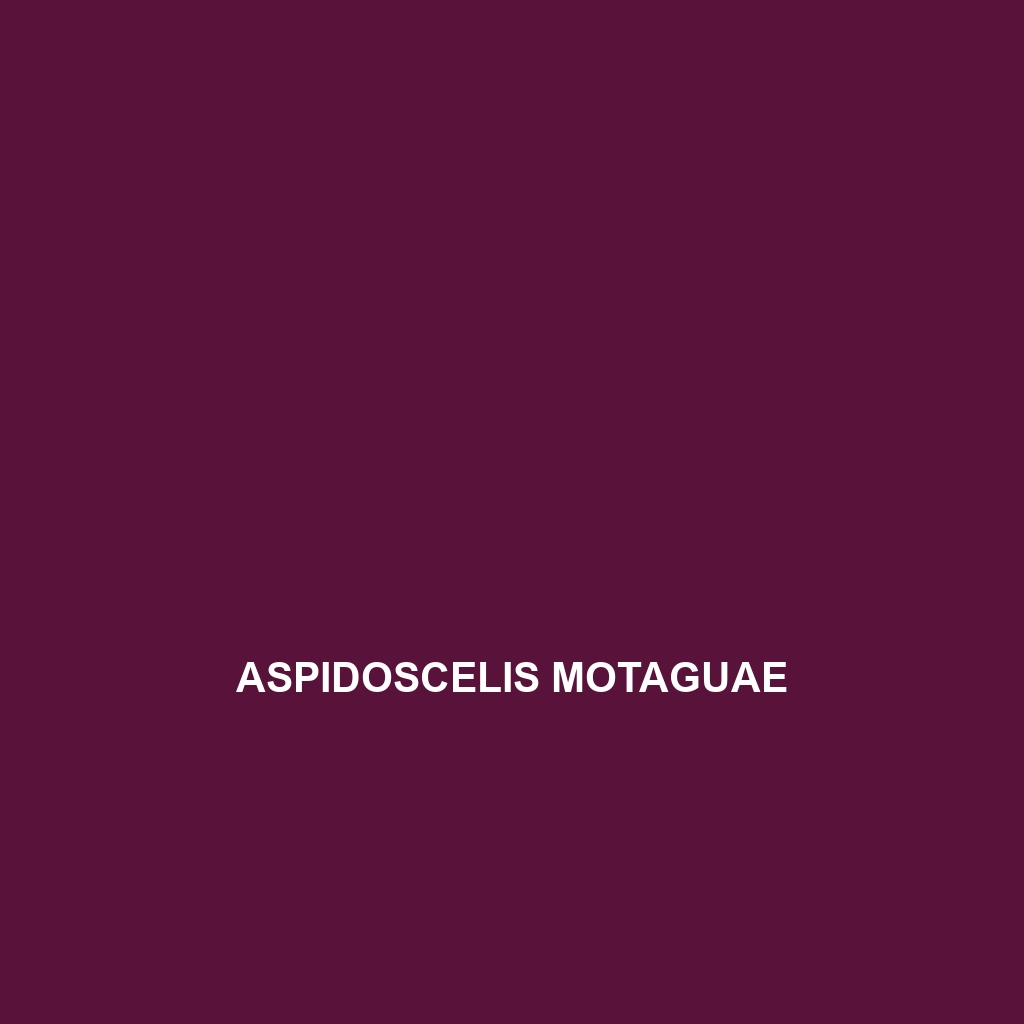Species Description: Aspidoscelis motaguae
Common Name: Aspidoscelis motaguae
Scientific Name: Aspidoscelis motaguae
Habitat
Aspidoscelis motaguae, commonly known as the Motagua Whiptail, is primarily found in the tropical dry forests of Guatemala, particularly around the Motagua River Valley. This species thrives in rocky and arid environments, favoring areas with abundant ground cover such as grasses and shrubs. Its range extends to adjacent regions with similar climatic conditions, making it integral to the local ecology.
Physical Characteristics
The Motagua Whiptail typically measures between 20 to 30 cm in total length, showcasing a slender, elongated body. Its coloration is mainly light brown or beige, with distinctive dark stripes running along its back. The scales are smooth, adding to its aerodynamic shape, which aids in swift movement through its habitat. Notable features include a sharply pointed snout and a long, whip-like tail, which is common among members of the Aspidoscelis genus.
Behavior
Aspidoscelis motaguae exhibits diurnal behavior, becoming active during daylight hours. It is known for its agility and speed, which helps it escape predators and capture prey. The species is also notable for its territorial displays, often engaging in physical confrontations with other whiptails to establish dominance. During the hotter months, these lizards can often be seen basking on rocks or exposed surfaces to regulate their body temperature.
Diet
The Motagua Whiptail is primarily insectivorous, feeding on a diet that includes grasshoppers, beetles, and other small invertebrates. Additionally, it may consume plant matter, particularly during the dry season when insects are less abundant. This dietary flexibility allows Aspidoscelis motaguae to adapt to variations in food availability within its habitat, contributing to its resilience as a species.
Reproduction
Breeding occurs during the rainy season, typically from May to August. Females of the species lay between 4 to 10 eggs in sandy or loose soil, where they can incubate for around 6 to 8 weeks before hatching. The young are independent from birth and exhibit similar behavioral patterns to adults. Notably, this species has been observed to display protective behaviors over their nests, ensuring a higher survival rate for the offspring.
Conservation Status
Currently, Aspidoscelis motaguae is classified as vulnerable due to habitat destruction and fragmentation primarily caused by agricultural expansion and urbanization. Conservation efforts are necessary to protect its natural habitat and ensure the survival of this unique species.
Interesting Facts
One fascinating aspect of Aspidoscelis motaguae is its adaptability to various environmental conditions. Studies have shown that this species can thrive in disturbed habitats, which may not be ideal for other reptiles. Additionally, it exhibits an intriguing social structure, where individuals engage in complex interactions that reflect their territorial nature.
Role in Ecosystem
Aspidoscelis motaguae plays a crucial role in its ecosystem as both a predator and prey. By controlling insect populations, it contributes to the health of its habitat. Furthermore, it serves as a food source for larger predators, thus maintaining the balance within the food web. The ecological significance of this species emphasizes the need for ongoing conservation efforts to protect its population and the ecosystem it inhabits.
